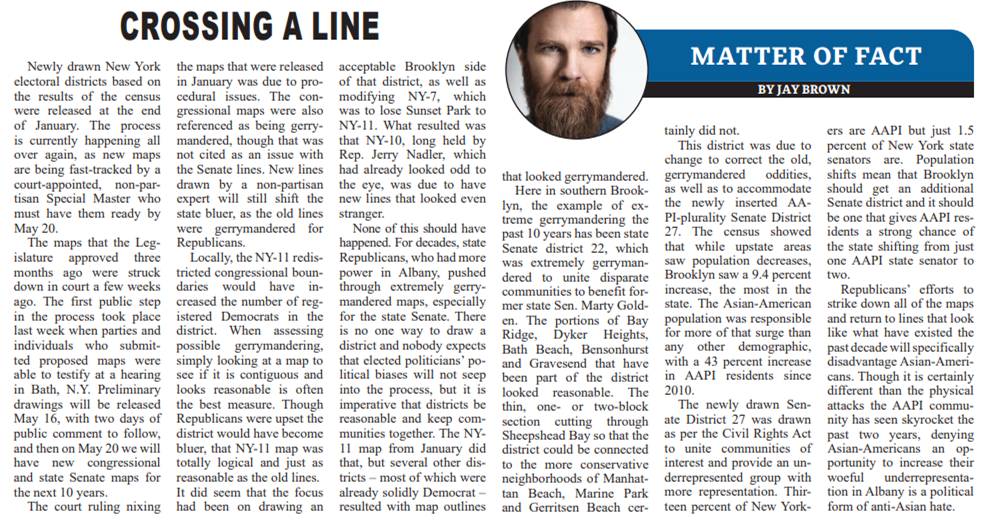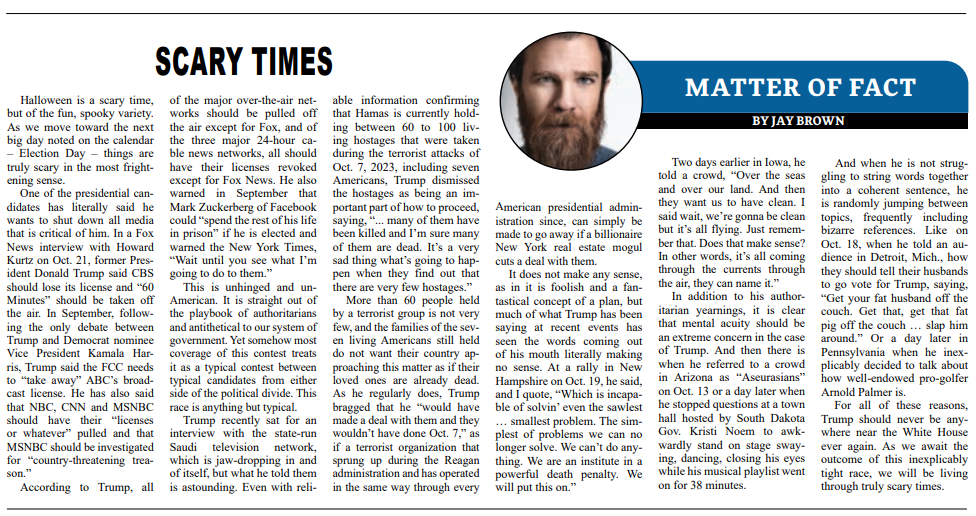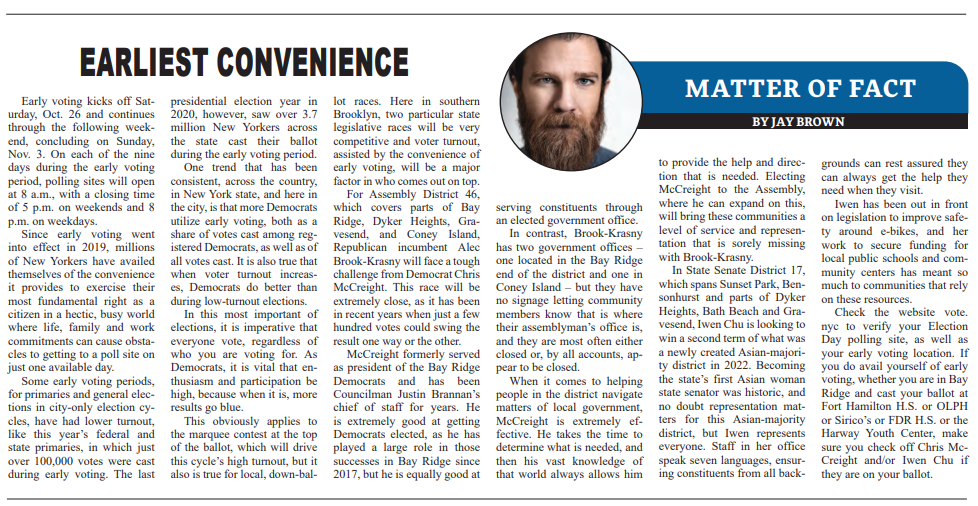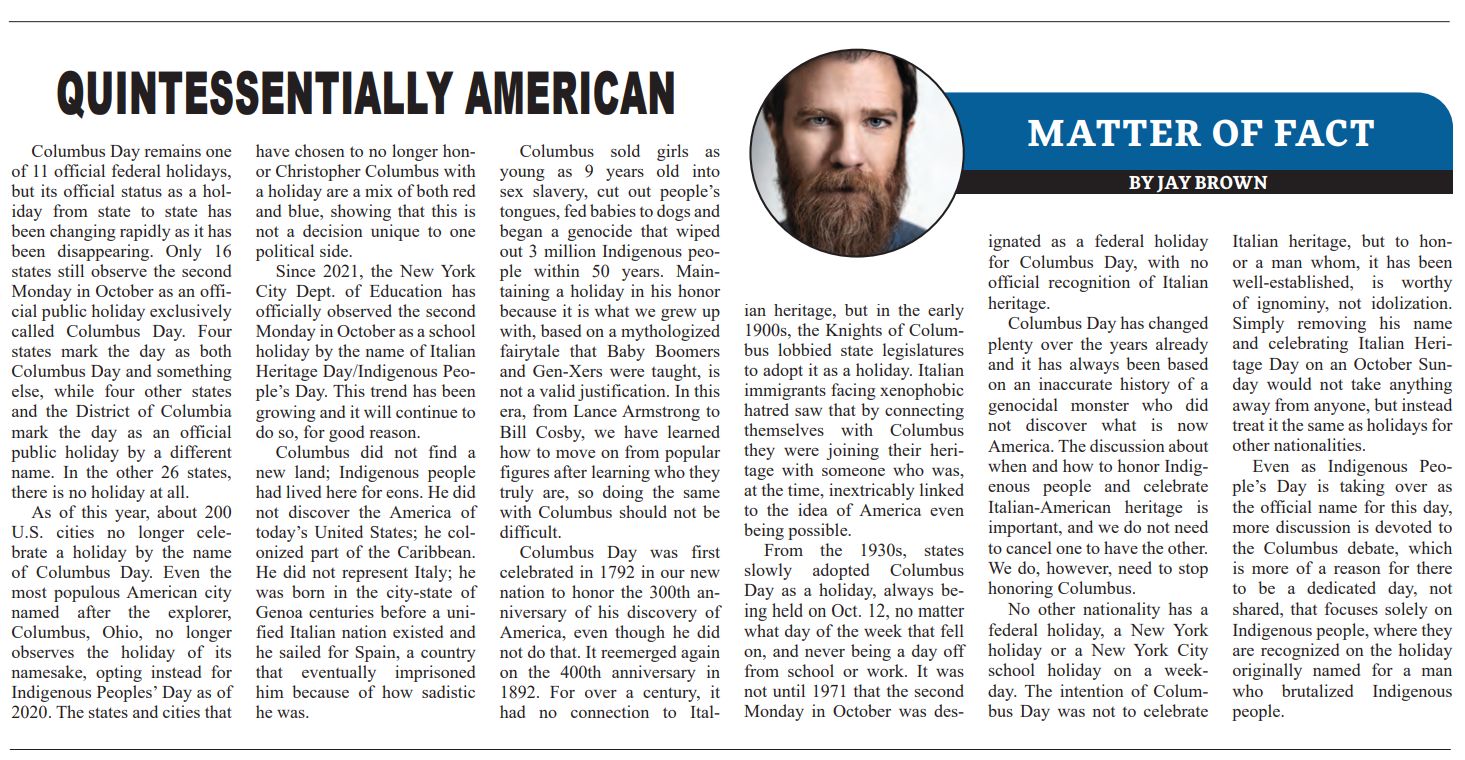This column, from the weekly opinion piece MATTER OF FACT, first appeared on BrooklynReporter.com, the Home Reporter and Spectator dated May 13, 2022
Newly drawn New York electoral districts based on the results of the census were released at the end of January. The process is currently happening all over again, as new maps are being fast-tracked by a court-appointed, non-partisan Special Master who must have them ready by May 20.
The maps that the legislature approved three months ago were struck down in court a few weeks ago. The first public step in the process took place last week when parties and individuals who submitted proposed maps were able to testify at a hearing in Bath, NY. Preliminary drawings will be released May 16, with two days of public comment to follow, and then we will have new congressional and state senate maps on May 20 for the next ten years.
The court ruling nixing the maps released in January ruled against them due to procedural issues. The congressional maps were also referenced as being gerrymandered, though that was not cited as an issue with the senate lines. New lines drawn by a non-partisan expert will still shift the state bluer, as the old lines were gerrymandered for Republicans.
Locally, the NY-11 redistricted congressional boundaries would have increased the number of registered Democrats in the district. When assessing possible gerrymandering, simply looking at a map to see if it is contiguous and looks reasonable is often the best measure. Though Republicans were upset district would have become bluer, that NY-11 map was totally logical and just as reasonable as the old lines.
“The census showed that while upstate areas saw population decreases, Brooklyn saw a 9.4 percent increase, the most in the state. The Asian American population was responsible for more of that surge than any other demographic, with a 43 percent increase in AAPI residents since 2010.”
Citation….
It did seem that the focus had been on drawing an acceptable Brooklyn side of that district, as well as modifying NY-7, which was to lose Sunset Park to NY-11. What resulted was that NY-10, long held by Rep. Jerry Nadler, which had already looked odd to the eye, was due to have new lines that looked even stranger.
None of this should have happened. For decades, state Republicans who had more power in Albany, pushed through extremely gerrymandered maps, especially in the State Senate. There is no one way to draw a district and nobody expects that elected politicians’ political biases will not seep into the process, but it is imperative that districts be reasonable and keep communities together. The NY-11 map from January did that, but several other districts – most of which were already solidly Democrat – resulted with map outlines that looked gerrymandered.
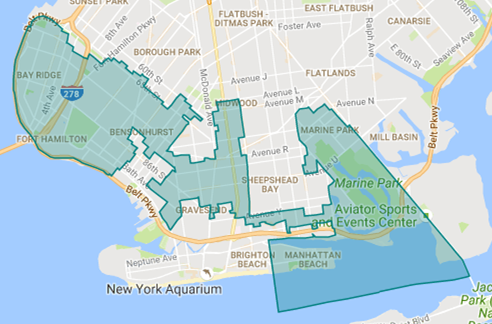
Here in Southern Brooklyn, the example of extreme gerrymandering the past ten years has been state senate district 22, which was extremely gerrymandered to unite disparate communities to benefit former-Senator Marty Golden. The portions of Bay Ride, Dyker Heights, Bath Beach, Bensonhurst, and Gravesend that have been part of the district looked reasonable. The thin, one or two block section cutting through Sheepshead Bay so that the district could be connected to the more conservative neighborhoods of Manhattan Beach, Marine Park, and Gerritsen Beach certainly did not.
This district was due to change to correct the old, gerrymandered oddities, as well as to accommodate the newly inserted, AAPI-plurality Senate district 27. The census showed that while upstate areas saw population decreases, Brooklyn saw a 9.4 percent increase, the most in the state. The Asian American population was responsible for more of that surge than any other demographic, with a 43 percent increase in AAPI residents since 2010.
The newly drawn Senate district 27 was drawn as per the Civil Rights Act to unite communities of interest and provide an underrepresented group with more representation. 13 percent of New Yorkers are AAPI but just 1.5 percent of New York state senators are. Population shifts mean that Brooklyn should get an additional senate district and it should be one that gives AAPI residents a strong chance of the state shifting from just one AAPI state senator to two.
Republicans’ efforts to strike down all of the maps and return to lines that look like what have existed the past decade will specifically disadvantage Asian Americans. Though it is certainly different than the physical attacks the AAPI community has seen skyrocket the past two years, denying Asian Americans an opportunity to increase their woeful under-representation in Albany is a political form of anti-Asian hate.

